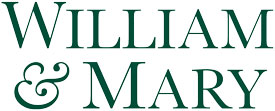William & Mary’s distinction as a leader in American education is over 300 years strong. Growth of the William & Mary brand in the 21st century requires consistent and thoughtful stewardship of university messaging and visuals. These brand guidelines define the university’s editorial and graphic standards and provide access to official artwork for members of the William & Mary community.
Visual Brand History
William & Mary’s brand is the living, constantly evolving perception of the university and its position in the higher education landscape. As such, the standards that define it are a perpetual stewardship, not the fruit of a one-time project. William & Mary’s brand has seen many iterations over the years, and will continue to be cultivated and communicated afresh in the years to come.
An abridged history of university visuals:
- 1690s: the cypher and coat of arms are both seen on campus in various contexts.
- 1694 – 1783: the coat of arms, enclosed in a circle to form a seal, is used as the primary university mark.
- 1783 – 1929: the Wythe Seal, a second seal bearing the image of a temple, is used as the primary university mark.
- 1920 – 2006: the original coat of arms, both in circle-enclosed and in unenclosed forms, is used as the primary university mark. From 1974 – 2006 a W&M with accompanying feathers was used to represent William & Mary athletically and in various other places.
- 2006 – 2014: a W&M logo with custom drawn ampersand is used as the primary university mark. The coat of arms and W&M cypher are also used in the absence of formal usage guidelines.
- 2014: the university’s first comprehensive visual identity guidelines are publicized, anchored by a new university logo bearing the cypher, university name, and year of charter.
- 2014 – present: university guidelines are continually evaluated and adjusted to reflect current needs and aspirations. An expanded university color palette is introduced in 2018.
